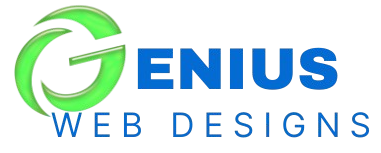
If you’re just starting out in web development, choosing the right tools can make a world of difference. With so many options available, it can be overwhelming to figure out where to begin. This guide highlights the best web development tools for beginners, covering everything from code editors to design tools and hosting platforms.
1. Code Editors
A code editor is where you’ll write and edit the code for your website. As a beginner, you’ll want something that is easy to use but powerful enough to handle your projects.
Recommended Code Editors:
- Visual Studio Code (VS Code):
- Why It’s Great for Beginners: Free, open-source, and highly customizable with a wide range of extensions for languages like HTML, CSS, and JavaScript. It also features live preview tools, integrated Git control, and debugging features.
- Useful Features: IntelliSense (code suggestions), integrated terminal, easy extension management.
- Sublime Text:
- Why It’s Great for Beginners: Lightweight, fast, and has a clean user interface. It supports multiple programming languages and features syntax highlighting for easy reading.
- Useful Features: Split editing, “Goto Anything” search, and customizable key bindings.
- Atom:
- Why It’s Great for Beginners: Open-source, with an easy-to-navigate interface. Atom allows users to easily tweak the editor’s appearance and functionality.
- Useful Features: GitHub integration, live preview, and collaborative features for team projects.
2. Web Browsers and Developer Tools
Testing your website in multiple browsers is critical to ensure it works across different platforms. Modern browsers come with built-in developer tools to help you debug and optimize your site.
Recommended Web Browsers:
- Google Chrome:
- Why It’s Great for Beginners: The most popular browser among developers, Chrome offers robust developer tools, including performance profiling, console debugging, and responsive design testing.
- Useful Features: DevTools (inspect elements, network monitoring), Lighthouse (automated performance audits).
- Mozilla Firefox:
- Why It’s Great for Beginners: Known for its user-friendly developer tools, Firefox also offers features like CSS grid debugging and a built-in screenshot tool.
- Useful Features: Responsive Design Mode, CSS Grid Inspector, and Style Editor.
3. Version Control Tools
Version control allows you to track and manage changes to your code, especially when working on large projects. Git is the most widely used version control system.
Recommended Version Control Tools:
- Git:
- Why It’s Great for Beginners: Git is essential for version control. It allows you to track changes, collaborate with other developers, and revert to previous code versions if needed.
- Useful Features: Command-line interface, branching and merging, integration with platforms like GitHub.
- GitHub:
- Why It’s Great for Beginners: GitHub is a platform where you can store your Git repositories, collaborate with others, and showcase your projects. It also integrates with various Continuous Integration/Continuous Deployment (CI/CD) tools.
- Useful Features: Pull requests, issues tracking, and collaborative workspaces.

4. Front-End Frameworks
For beginners, front-end frameworks are helpful because they provide pre-written code and templates, allowing you to focus on building a functional website faster.
Recommended Front-End Frameworks:
- Bootstrap:
- Why It’s Great for Beginners: Bootstrap is a popular HTML, CSS, and JavaScript framework that helps you create responsive websites quickly. It comes with a grid system, components like navigation bars, and pre-designed templates.
- Useful Features: Mobile-first design, easy customization, and built-in JavaScript plugins.
- Foundation:
- Why It’s Great for Beginners: Similar to Bootstrap, Foundation is another front-end framework that focuses on responsive design. It includes HTML and CSS templates, as well as JavaScript components for building interactive websites.
- Useful Features: Advanced grid system, customizable, and accessible components.
- Tailwind CSS:
- Why It’s Great for Beginners: Unlike Bootstrap or Foundation, Tailwind is a utility-first framework, meaning it gives you low-level utility classes to build designs directly in your markup. It encourages flexibility and minimalism.
- Useful Features: Customizable configuration, mobile-first design, and no predefined components.
5. Back-End Development Tools
As a beginner, understanding the basics of back-end development is crucial to building dynamic websites. Back-end tools manage the server-side of your site, including databases and server scripting.
Recommended Back-End Tools:
- Node.js:
- Why It’s Great for Beginners: Node.js is a JavaScript runtime that allows you to build server-side applications with JavaScript. It’s easy to learn if you’re already familiar with JavaScript and has a vibrant community of developers.
- Useful Features: Asynchronous programming, package manager (npm), and scalability.
- PHP:
- Why It’s Great for Beginners: PHP is one of the oldest and most widely-used server-side scripting languages. It’s simple for beginners to pick up and powers popular platforms like WordPress.
- Useful Features: Easy integration with databases, large community, and extensive documentation.
- Python (Django):
- Why It’s Great for Beginners: Python is an easy-to-learn programming language, and Django is a web framework that allows you to build back-end applications quickly. It’s scalable and includes built-in features for database handling and authentication.
- Useful Features: Secure, scalable, and has an easy-to-use ORM for database management.
6. Design and Prototyping Tools
A key component of web development is designing and prototyping. Tools like design software and wireframing tools help developers visualize the structure of the website before development begins.
Recommended Design Tools:
- Figma:
- Why It’s Great for Beginners: Figma is a collaborative design tool that allows you to create UI/UX designs and prototypes. It’s web-based, which makes it easy to share designs with others.
- Useful Features: Real-time collaboration, vector graphics, and interactive prototypes.
- Adobe XD:
- Why It’s Great for Beginners: Adobe XD allows for wireframing, prototyping, and UI design. It integrates well with other Adobe tools and offers a free version.
- Useful Features: Intuitive interface, repeat grid function for design consistency, and interactive prototyping.
- Sketch:
- Why It’s Great for Beginners: Sketch is a vector-based design tool for creating user interfaces and wireframes. Although it’s available only for Mac users, it’s a favorite for web designers.
- Useful Features: Symbol-based design, easy integration with third-party plugins.

7. Web Hosting Providers
Once your site is ready, you’ll need to host it online. Beginners need reliable, cost-effective hosting that offers support and scalability.
Recommended Web Hosting Providers:
- Bluehost:
- Why It’s Great for Beginners: Bluehost offers affordable hosting with great customer support. It’s a good option for beginners building their first website and includes a one-click WordPress installer.
- Useful Features: Free domain for the first year, 24/7 support, and scalable plans.
- SiteGround:
- Why It’s Great for Beginners: Known for fast load times and excellent customer support, SiteGround is ideal for beginners. It offers shared hosting as well as more powerful hosting options as you grow.
- Useful Features: Free daily backups, one-click installs for CMS like WordPress.
- HostGator:
- Why It’s Great for Beginners: HostGator offers reliable and affordable hosting with excellent uptime. It’s especially great for WordPress users and those looking for budget-friendly hosting options.
- Useful Features: Free website builder, unmetered bandwidth, and 45-day money-back guarantee.
Final Thoughts
Web development can be a steep learning curve, but with the right tools, it becomes much easier. Whether you’re focused on front-end development, back-end programming, or both, the tools listed above provide the foundation for building a robust website. Start with these beginner-friendly tools, and as you gain experience, you can explore more advanced options to enhance your development process.


